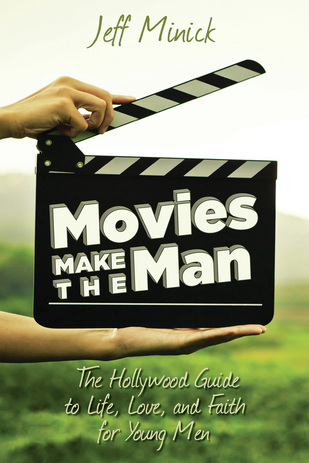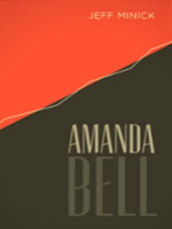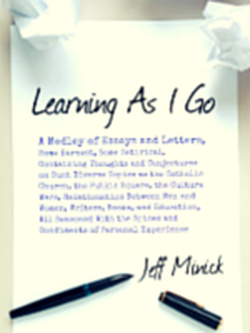So there you are, seated in a room filled with strangers and a few friends, other students who like yourself have just finished the multiple choice section of their AP English Language and Literature exam, taken a short break, and now face a two hour exam in which they must compose three essays. The proctor passes out the exams and your composition booklets, gives some last minute instructions, orders you to begin, and writes the starting and ending times for the exam on the board. You’ve spent the past eight months preparing for this moment, reading literature and writing dozens of essays, but you open the test sick with fear that you will fail.
Here are some suggestions to help you boost your score on this exam, any other AP written exam, and indeed on any in-class essay.
- Read the prompt or the question three times. Be sure that you understand what you are being asked to address in your writing. You may write like an angel, but your style will count for nothing if you can’t answer the question. Watch, too, for hints in the prompt. If the prompt advises “You may wish to look at the author’s tone, point of view, and use of metaphor,” these are more than mere suggestions. The prompt is telling you to consider these literary devices and to examine them in your essay.
- Come up with a strong thesis. It’s great if you can think of a “hook,” an opening that will attract the reader’s attention, but that is secondary to the thesis. When you write a thesis, you need to be absolutely clear as to your position. Don’t be wishy-washy. Don’t sit on a fence. Pick a side, put down a clean, well-honed thesis statement, and defend it in your essay with evidence taken from whatever source you are given.
- Use topic sentences that point the reader back to the thesis. Use transition words—although, nevertheless, in addition, and so on—to cruise from one paragraph to the next.
- Use solid evidence. Don’t write in the abstract. If you are asked to write about a poem, take brief snatches of that poem and incorporate them into your essay. If you are writing an essay about a history prompt, provide people and events as your evidence. You are showing the reader why you took the stand you did.
- The AP exams, and most in-class tests, require students to write their essay by hand. Unfortunately, we live in an era that no longer stresses the importance of a good hand. Occasionally, I had students whose writings were illegible, and we had to work on that until their words could be read. (My own handwriting, by the way, often borders on unreadable.) If you can’t write cursive, then print. Have friends or parents critique your writing. And by the way, don’t space your words too far apart. That sort of writing gives the impression you are still in elementary school.
- Exaggerate your indentation a little. You want to be sure that the grader knows when a new paragraph begins.
- Watch the clock. If you are taking the AP exams, then you have two hours for three essays, which gives you forty minutes per essay. If you spend sixty minutes on one essay, the other two will necessarily be shorter.
- Practice writing forty-minute essays and take a word count. Once I had a student who could write 700 to 800 words in that time. His writing was at times repetitive, but it was still an impressive feat. But most students will write between 350 and 500 words during that time. If you are writing less than 350 words, odds are that you are going to come up short on the test.
- Remember: You aren’t just taking a test. You are in a race. Go back and read #7 and #8 here, and know that you are in a race. Your competitors are the clock and yourself.
- Don’t put your personal problems into an essay. The graders don’t care whether you broke up with a girlfriend, are having a bad hair day, or are suffering a religious crisis. Stick to the prompt.
- You have finished the in-class essay ten minutes early. Do you sit twiddling your thumbs and wondering what you’re going to have for lunch? Only if you want to fail. No, you take a 30 second breather, then you dive back into that essay, correcting grammar and spelling, marking through words and substituting others. (AP graders and other teachers are not expecting your paper to be flawless in appearance.)
- Let’s say that during your revision in #10 you find that you want to add more evidence. You clearly can’t write it into the paper, but you can put a large asterisk where you wish to insert your addition, put another asterisk at the bottom of the paper, and make your point there.
- Your conclusion ideally should in some way both sum up your arguments and lead the reader just one step ahead. There is no more boring conclusion than say, “Thus, we see blah…blah…blah.” If, however, you are out of time and you feel the need to resort to that ho-hum ending, then do so. Often, however, your final point of your argument may make a better ending statement than this sort of conclusion.
- Expect the unexpected. Once, during some entrance exam to a British school, the examiner wrote the color “Red” on the board and gave the students two hours to write on that subject. I tried the same in my class once, gave the students 45 minutes, and collected some decent essays. How could you write an essay on “Red?” Well, what does it bring to mind? For me, red immediately brings to mind passion, blood, revolution, a Porgy and Bess song about redheaded women, sangria, Red Bull, and a dozen other things. Be prepared to stretch your mind in this race.
- If your handwriting is mediocre or poor, don’t use a heavy gel pen. This sort of pen generally makes your writing look even worse. Use a fine point or medium point pen. Experiment before the test with the pen that works best for you. Keep in mind, too, that you’ll be writing for a long time. Find a pen that comfortably fits your fingers.
- Keep tests in perspective. Few tests truly determine your future. You are not a test. If you prepared as best you could for the test, then what else is there? Take a Stoic attitude to test taking. Do what you can to the best of your ability and walk away with a sense of equanimity. It’s done. On to the next challenge.






 RSS Feed
RSS Feed